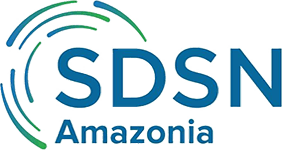Today, the Sustainable Development Report (SDR), including the SDG Index and Dashboards to track progress on the Global Goals for 2030, was released. For the first time since Heads of State of all 193 UN member countries agreed on these universal goals at a historic summit in 2015, the annual report shows a reversal in progress. The report was written by a group of authors led by Prof. Jeffrey Sachs, President of the Sustainable Development Solutions Network (SDSN). Published by Cambridge University Press, the publication outlines the short-term impacts of COVID-19 on the SDGs and describes how the SDGs can frame the recovery.
“For the first time since the SDGs were adopted in 2015, the world lost ground on the SDGs in 2020. The Covid-19 pandemic has created not only a global health emergency but also a sustainable development crisis. To restore SDG progress, developing countries need a significant increase in fiscal space, through global tax reform and expanded financing by the multilateral development banks. Fiscal outlays should support the six key SDG transformations: quality education for all, universal health coverage, clean energy and industry, sustainable agriculture and land use, sustainable urban infrastructure, and universal access to digital technologies.” says Jeffrey D. Sachs, President of the SDSN and first author of the report.
For the first time since the adoption of the SDGs in 2015 by the international community, the SDG Index has decreased.

The COVID-19 pandemic is a setback for sustainable development everywhere. The decline in SDG performance globally is driven to a large extent by increased poverty rates and unemployment. This decline is likely underestimated due to time lags in international statistics. Sound policies and strong global cooperation can restore and accelerate SDG progress in the coming decade. The report presents a detailed framework for how countries can “build forward” better using the SDGs.
Finland tops the 2021 SDG Index, followed by two Nordic countries – Sweden and Denmark. Interestingly, Finland also took the top spot as the happiest country in the world according to survey data taken from the Gallup World Poll and published in the World Happiness Report last March 2021. Yet even Finland and Nordic countries face major challenges on several SDGs and are not on track for achieving all of the SDGs by 2030.
The urgent need for increased fiscal space in developing countries
Low-income developing countries (LIDCs) lack the fiscal space to finance emergency response and investment-led recovery plans aligned with the SDGs. COVID-19 has highlighted the limited capacity of LIDCs to tap market financing. While the governments of high-income countries have borrowed heavily in response to the pandemic, LIDCs have been unable to do so because of their lower market creditworthiness. The major short-term implication of the difference in fiscal space of high-income and low-income countries is that rich countries are likely to recover from the pandemic more quickly than poor countries. The report identifies four ways to increase the fiscal space of LIDCs:
(1) Improved global monetary management, notably improved liquidity for the LIDCs
(2) Improved tax collection supported by several global tax reforms
(3) Increased financial intermediation by the multilateral development banks (MDBs) to support long-term development financing
(4) Debt relief
The Decade of Action for the SDGs requires a strong multilateral system
Global challenges, including pandemics but also climate change and the biodiversity crisis, require a strong multilateral system. Now more than ever, the multilateral system must be supported to work effectively. International cooperation, covered under SDG 17 (Partnerships for the Goals), can speed
up a favorable resolution of this pandemic and a sustainable, inclusive and resilient recovery. Learning the lessons from this pandemic will be key to strengthen the ability of the international community to prepare, respond and recover from other critical risks.
Achieving the SDGs is a global responsibility. Domestic strategies to achieve the SDGs must avoid generating negative impacts – or “spillovers” – on other countries. The report shows that high income countries and OECD countries tend to generate the largest negative spillovers, notably through unsustainable supply chains, base erosion, and profit shifting. Spillovers must be understood, measured, and carefully managed.

Other findings of the Sustainable Development Report 2021
- East and South Asia has progressed more on the SDGs than any other region, both since 2010 and since the adoption of the goals in 2015. The three individual countries that have progressed most on the SDG Index score since 2015 are Bangladesh, Côte d’Ivoire, and Afghanistan. Some of the countries that progressed most also started from lower baselines. By contrast, the three countries that have declined the most are Venezuela, Tuvalu, and Brazil.
- There is some discrepancy between expressed political support for the SDGs and integration of the goals into strategic public policy processes. This year’s SDSN Survey on government efforts for the SDGs reveals that fewer than half the countries surveyed (20 out of 48) mention the SDGs or use related terms in their latest official budget document. Forward looking policy trackers for key SDG transformations can help move beyond commitments and track countries’ actions.
- More than five years after the adoption of the SDGs, considerable gaps in official statistics remain in terms of country coverage and timeliness for many SDGs; in particular SDG 4 (Quality Education), SDG 5 (Gender Equality), SDG 12 (Responsible Consumption and Production), SDG 13 (Climate Action), and SDG 14 (Life Below Water).
Since 2015, this annual report has provided the most up-to-date data to track and rank the performance of all UN member states on the SDGs. As an unofficial monitoring tool published by Cambridge University Press, the SDR is complementary to official efforts to monitor the SDGs.
About SDSN
The UN Sustainable Development Solutions Network (SDSN) mobilizes scientific and technical expertise from academia, civil society, and the private sector to support practical problem solving for sustainable development at local, national, and global scales. The SDSN has been operating since 2012 under the auspices of the UN Secretary-General. The SDSN is building national and regional networks of knowledge institutions, solution-focused thematic networks, and the SDG Academy, an online university for sustainable development.






